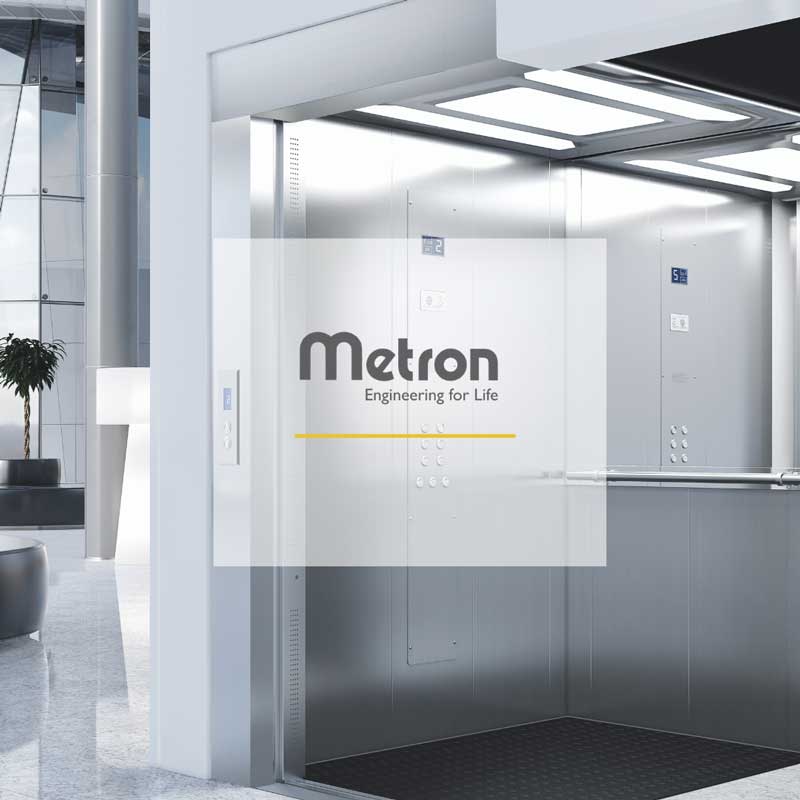Everything You Need to Know About Elevators
Elevator is any installation used to vertically lift people or things. The modern elevator is one of the most important inventions as it changed the urban landscape of the 20th century, the architecture and triggered the reconstruction of the tall buildings.
The elevator is the mean of transportation that improved the quality of our daily lives and made our lives easier. Around the world, millions of people use the elevator approximately 4 times a day, this sums it up to more than 325 million elevator journeys every day.
But are all elevators the same?
The two most common types of elevators are Traction and Hydraulic Elevators that we meet every day in business buildings, hotels, public buildings and in residences, hospitals ensuring our easy transportation.
What are the differences between Traction vs Hydraulic Elevators?
The major difference between traction and hydraulic elevators lies in the way their system moves the cabin. Although they are different, both guarantee a reliable and smooth movement.
Traction elevators, either geared or gearless, operate via a system of a pulley, ropes and counterweights. The counterweights of the lift allow the cabin to be lifted consuming less energy. In older buildings, usually we find the engine room on the roof of a building where the operating system (MR) was places while today it is usually placed inside the shaft (MRL).
Here’s how it works:
- When you enter the elevator cabin and push the button, strong steel ropes will begin to move outside the unit.
- These ropes roll over the sheave, which has built-in grooves. These grooves allow the sheave to maintain a tight grip on the cables.
- The cabin and counterweight balance one another, allowing the weight to teeter when activated.
- This counterweight stores energy and allows the cabin to move in the chosen direction.
Another common type of elevator is the hydraulic elevator. Hydraulic elevators use a piston and pump. The piston is connected to the elevator and the pumping unit is housed in a separate machine room. Hydraulics allow the cab to move smoothly and quietly.
Hydraulic elevators work like this:
- A piston is connected to the elevator within the hoistway.
- The nearby machine room houses the pumping unit.
- Once you activate the elevator, the hydraulic system moves pressurized fluid into a cylinder, where it moves the piston for ascension.
- When descending, the system moves the fluid back into its reservoir, which allows the cab to move downward without jolting or stopping.
The Main Advantages of Each Elevator Type
Advantages Of Traction MRL Lifts
Mechanical elevators are the largest percentage of elevators that exist today. You will find them more in medium to high traffic buildings as in large business and public service buildings, as they can carry more people at high speed.
- No Machine Room Needed: You can capitalize every square meter as no separate machine room is needed when you choose a traction elevator. In addition, the fact that the unit is powered from a small cabinet placed next to the top floor’s casing, it makes it suitable for areas with less available space.
- High Speed Rise: Traction elevators are 65% faster. A very important advantage as the higher speed decreases the travel duration and increases the potential number of the trips and people it can move. Both are vital factors for better user experience especially during rush hours.
- Energy Efficient: The Metron Traction MRL is designed according to the latest INVERTER technology and consumes 35-45% less energy power for the same cabin capacity which means smaller electrical bills for the next 30 years, as long as the life cycle of an elevator.
- Smooth ride: The quality of the ride remains intact even if we have 100-150 starts per hour as the traction MRL has no sensitivity to external factors such as temperature.
- High safety: Metron Traction lifts ensure precise leveling on the floors and automatic release even in the event of a power outage.
Advantages Of Hydraulic Lifts
Hydraulic lifts are the most common solution for homes and buildings with few floors where the use of the elevator is rather limited.
- Less shaft space | Bigger Cabin: The main advantage of hydraulic lifts is that we can install a larger cabin in specific shaft dimensions. The main reason is that hydraulic lifts do not have counterweights that take up space inside the shaft.
- Suitable for very low pits and headrooms: Especially in existing buildings where there is no shaft, hydraulic lifts need only 25 cm pit and 2.5 m headroom. This makes them the only available solution as we can create the pit at the lowest stop of the stairs and also there is no need for constructional changes for the headroom.
- Smooth movement: The hydraulic elevators are equipped with modern technology sensors that ensure with optimum accuracy the smooth ride and the timely cessation of the cabin at each floor.
- Economic Solution: Due to its simplicity, the hydraulic lift is an economic solution for low and medium height buildings (2-5 stops).
Which Type of Elevator Is The Right For Me?
Each project is unique with different technical requirements and parameters such as the height of the building, the number of stops (floors), the intensity of use, the dimensions of the shaft, the engine room, and the list goes on.
You can contact the Metron experts to discuss in detail all the specifications of the project and help you choose the optimum solution for you.


